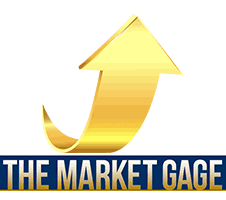
Gold back over $1,500 this morning, but could still be headed for its third consecutive weekly loss Friday as optimism about U.S.-China trade relations grew, reducing the yellow metal’s appeal as a hedge against uncertainty. However, the indications that world central banks are leaning towards monetary policy easing is keeping gold over the psychological $1,500 mark.
This morning’s economic news, including up U.S. Retail sales for August (up 0.4% – the expected rise was 0.2%) and a positive Consumer Sentiment for September (coming in at 92.0, rather than the forecast 91.4) took a little shine off gold, but not a significant hit.
The December gold contract rose 0.3% Thursday to $1,507.40 an ounce on Comex but was down 0.5% in the first four days of the week. Currently, the December contract has risen to $1,511.30.
Prices of the precious metal have fallen in recent weeks on weak economic data, uncertainty over the U.S.-China trade war, fears of an economic recession and heightened speculation of monetary easing from central banks around the world.
The world’s two largest economies are expected to hold high-level talks next month.
The European Central Bank cut interest rates Thursday, going deeper into negative territory, and ECB Chief Mario Draghi pledged an indefinite amount of quantitative easing to jumpstart the euro-zone’s economy. The move prompted a Twitter exchange between Draghi and U.S. President Trump, who has advocated for the U.S. Federal Reserve to cut rates.
Both the Fed and the Bank of Japan have rate decisions scheduled for next week.
The CME FedWatch Tool put the probability of a Fed interest-rate cut on Sept. 18 at 86.5% this morning, with the same percentage predicting a 25-basis-point reduction. That’s down from 94.6% a week earlier. The odds of no cut were 13.5%.
Also contributing to weakness in precious metals, 10-year Treasury yields neared their highest level in more than a month.
In economic news, U.S. jobless claims fell to a five-month low in data released Thursday, suggesting that the labor market remains strong despite slowing job growth. The core consumer price index, a measure of underlying U.S. inflation, accelerated more than forecast to a one-year high in August, Bloomberg reported. U.S. retail sales and University of Michigan consumer sentiment data are due out Friday.
Silver was little changed Thursday but its gains this week have outpaced gold’s. The most-active December contract increased less than 0.1% to $18.177 an ounce on Comex and is up 0.3% in the first two four days of this week.
Palladium climbed to a record $1,608.69 an ounce on Thursday amid possible labor issues in South African mines. It soared more than 5% in the first four days of this week. Spot platinum increased 0.7% Thursday and is little changed for the week.
South Africa’s main platinum mining union said Tuesday that it had formally declared that wage talks with Anglo American Platinum (Amplats) and Sibanye-Stillwater were deadlocked, raising the possibility of strike action if the issue cannot be resolved, Reuters reported.
Disclaimer: This editorial has been prepared by Dillon Gage Metals for information and thought-provoking purposes only and does not purport to predict or forecast actual results. This editorial opinion is not to be construed as investment advice or as a recommendation regarding any particular security, commodity or course of action. Opinions expressed herein cannot be attributable to Dillon Gage. Reasonable people may disagree about the events discussed or opinions expressed herein. In the event any of the assumptions used herein do not come to fruition, results are likely to vary substantially. It is not a solicitation or advice to make any exchange in commodities, securities or other financial instruments. No part of this editorial may be reproduced in any manner, in whole or in part, without the prior written permission of Dillon Gage Metals. Dillon Gage Metals shall not have any liability for any damages of any kind whatsoever relating to this editorial. You should consult your advisers with respect to these areas. By posting this editorial, you acknowledge, understand and accept this disclaimer.
